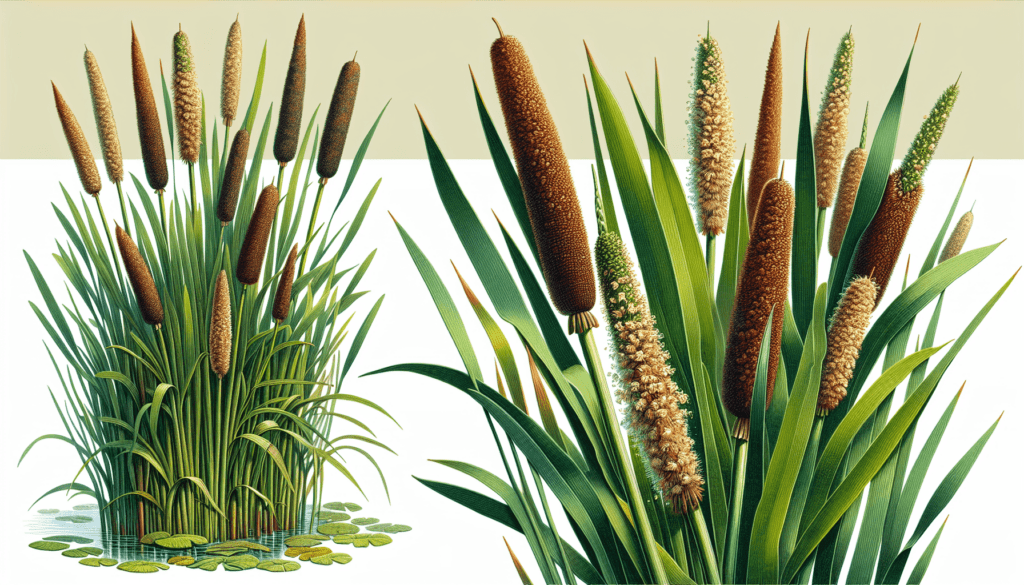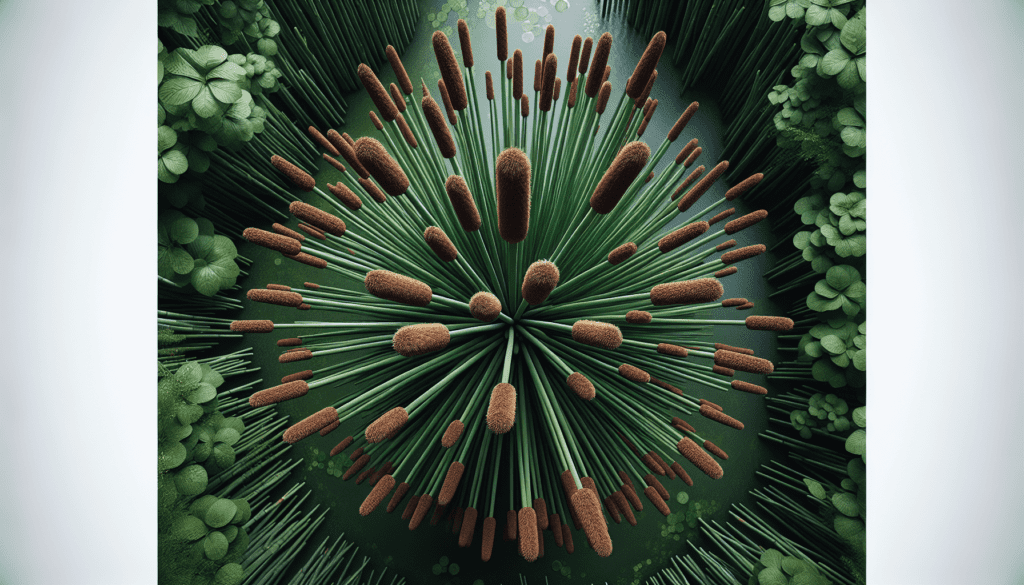You are invited to embark on a journey of botanical discovery as we explore the intriguing world of the aquatic plant known as California Bulrush. This article will elucidate various facets about this particularly fascinating flora, highlighting its distinctive features, its ecological significance, and its practical applications. By the end of your reading, your understanding and appreciation for the California Bulrush would’ve grown manifold.
Identification of the California Bulrush
The California Bulrush is a noteworthy aquatic plant that features virtues in both functional and ecological terms.
Scientific Name
Scientifically, this plant is known as Schoenoplectus californicus. It belongs to the Cyperaceae family, which is commonly referred to as the sedge family. This family is widely distributed across the globe, possessing a strong representation in wetlands.
Growth Habits
Distinctive growth habits characterize the California Bulrush. It grows perennially, meaning it has a lifespan of more than two years. It grows in dense clusters, reaching heights that can range from 2 up to 10 feet. These clusters contribute to the plant’s colonizing nature, allowing it to spread over and stabilize substantial areas of land.
Stalk and Leaf Description
The California Bulrush displays a unique structure; it is a very tall, robust, reed-like plant. The main body consists primarily of long, slender, rounded, and hollow stalks – known as ‘culms’. These culms appear green to grayish-green in color. The leaves of the California Bulrush are mostly basal and are reduced to spirit-shaped sheaths covering the lower portion of the stalk.
Flower Description
Flower-wise, the California Bulrush presents brownish clusters of flower spikes at the top ends of its long stalks. It blooms between late spring and early fall, contributing a subtle touch of color to its overall greenish appearance.
Habitat of the California Bulrush
A better appreciation of the California Bulrush can be derived from understanding its natural habitat and the conditions it flourishes in.
Preferred Climate Conditions
The California Bulrush is highly adaptable and quite tolerant, enduring a range of climates. Nevertheless, it prefers temperate to warm climates. It can grow in both fresh and brackish waters, exhibiting admirable salt tolerance qualities.
Types of Water Sources
Ideally, the California Bulrush thrives in wetlands. It can be found balancing on the edges of freshwater bodies such as marshes, swamps, ponds, lakes, and slow-moving streams. Its roots submerged underwater, the plant can also tolerate periods of dry spells due to its deep root system.
Soil Requirements
In terms of soil, this plant doesn’t have strict requirements. It primarily prospers in heavy, wet soils which are organic-rich and poorly drained.
Sunlight Requirements
Being a markedly vigorous plant, the California Bulrush is a full sun devotee. It requires exposure to direct sunlight for a minimum of six hours per day, though it can also tolerate somewhat lower light conditions.

Distribution of the California Bulrush
The California Bulrush has a rather expansive reach in distribution.
Native Areas in California
As the name suggests, the California Bulrush is native to California. However, it also extends throughout other parts of North America, particularly the Western United States and parts of Mexico.
Spreading to Other Regions
Despite being native to North America, this resilient bulrush has managed to spread to different parts of the world. It has been cataloged as a naturalized species in regions like South America, Australia, New Zealand, and even parts of Africa, Asia, and Europe.
Current Habitat Range
Presently, besides its native and naturalized territories, the California Bulrush is also planted and grown in many places for its ecological benefits, thereby expanding its geographic footprint.
Life Cycle of the California Bulrush
The lifecycle of the California Bulrush exhibits fascinating qualities that testify to its resilience.
Germination Process
Californian Bulrush reproduction is predominantly through seed germination. It disperses seeds into the water, which benefit from a period of cold stratification or imbibition to break dormancy.
Maturity and Reproduction
Upon reaching maturity, the California Bulrush reproduces both sexually through pollination and asexually through the spread of rhizomes, or root-like stems that grow underground. This dual reproduction process enhances the plant’s colonizing capabilities.
Seasonal Changes and Dormancy
In response to seasonal changes, the California Bulrush exhibits an annual cycle of growth and dormancy. During fall and winter, its above-ground parts die off and the plant retreats into its rhizomes. In the spring, new shoots sprout from these rhizomes, kickstarting the growth cycle anew.

Environmental Benefits of the California Bulrush
The California Bulrush renders numerous environmental benefits, making it a plant of choice for habitat restoration.
Water Filtration Capabilities
This plant plays a vital role in water purification. It aids in the removal of harmful pollutants and toxins from the water, thereby improving water quality.
Soil Erosion Prevention
The California Bulrush helps in soil conservation. Its dense clusters of rhizomes form a network of roots that hold the soil together and prevent erosion by wind or water.
Wildlife Habitat and Food Source
This bulrush serves as a vital part of the ecosystem, providing habitat and food for many types of wildlife, including waterfowl, amphibians, insects, and even mammals.
Threats to the California Bulrush
Despite its robust nature, the California Bulrush faces multiple threats.
Climate Change Impact
With increasing climate change, the altering precipitation patterns and rising sea levels directly threaten wetlands, the main habitat of the California Bulrush.
Habitat Destruction
Human activities, such as urban development, agricultural expansion, and dredging, lead to the destruction of wetlands, thereby threatening this plant’s natural habitat.
Invasive Species
Invasive species, including certain types of snails and non-native plants, can out-compete the California Bulrush and take over its habitat.
Conservation Efforts for the California Bulrush
Amid these threats, several measures are being taken towards conserving the California Bulrush.
Preservation Activities
Wetland preservation is a significant aspect of California Bulrush conservation. Measures are in place to protect existing wetlands, regulate activities that would disturb these ecosystems, and ensure that any lost or degraded wetlands are compensated for.
Restoration Projects
Besides preservative actions, restoration initiatives aim at recreating wetland ecosystems where they’ve been lost, with the bulrush being a frequent plant of choice for such projects.
Role of Conservation Organizations
Conservation organizations play an instrumental role in this regard. They conduct research, educate the public, lobby for protective policies, and directly participate in preservation and restoration efforts.
Uses of the California Bulrush
Practical uses of the California Bulrush span centuries.
Traditional Uses by Native Americans
Native Americans have utilized the California Bulrush for many purposes, from weaving traditional baskets and mats to using the plant’s antiseptic properties for medicinal purposes.
Modern Uses in Landscaping
In modern times, this bulrush has found usage in landscaping, being used to stabilize steep slopes, control erosion, and revive degraded wetlands.
Commercial Uses
Commercially, the California Bulrush serves as a source of raw material for handicrafts. Its strong, supple stems are ideal for weaving and crafting.
Cultivation of the California Bulrush
Cultivating the California Bulrush can offer several benefits and is a reasonably straightforward process.
Propagation Methods
Propagation is typically achieved either through seed sowing or the division of established clumps. Seeds can be sown directly into prepared soil in late winter or spring, while divisions should preferably be undertaken during the plant’s growing period.
Planting Guidelines
When planting the California Bulrush, conditions mimicking its natural habitat should be adhered to. It is optimally grown in shallow water or consistently moist soil with ample exposure to sunlight.
Care and Maintenance
For maintenance, care should be taken to provide this plant with perennial access to water, especially if grown in warmer and drier regions. Occasional pruning of dead stalks will keep the plant looking neat and tidy.
Current Research on the California Bulrush
The California Bulrush continues to be a subject of keen research.
Ecological Studies
Ongoing ecological studies investigate the California Bulrush’s role as a bioindicator and its impact on aquatic ecosystem health.
Potential Use in Wastewater Treatment
Researchers are exploring the plant’s potential use in wastewater treatment, given its ability to absorb and store pollutants inside its tissues.
Impacts of Pesticides and Pollutants
Studies are also being conducted on how various pesticides and pollutants impact the growth and survival of the California Bulrush. These findings lead to improved management practices and more effective conservation efforts.
In summary, the California Bulrush remains an invaluable ecological and functional asset, worthy of continued research, preservation, and cultivation. Its efficacy in water filtration, erosion control, wildlife support, combined with its adaptability, resilience, and manifold uses, underlines its relevance and importance both in its native habitats and further afield.
